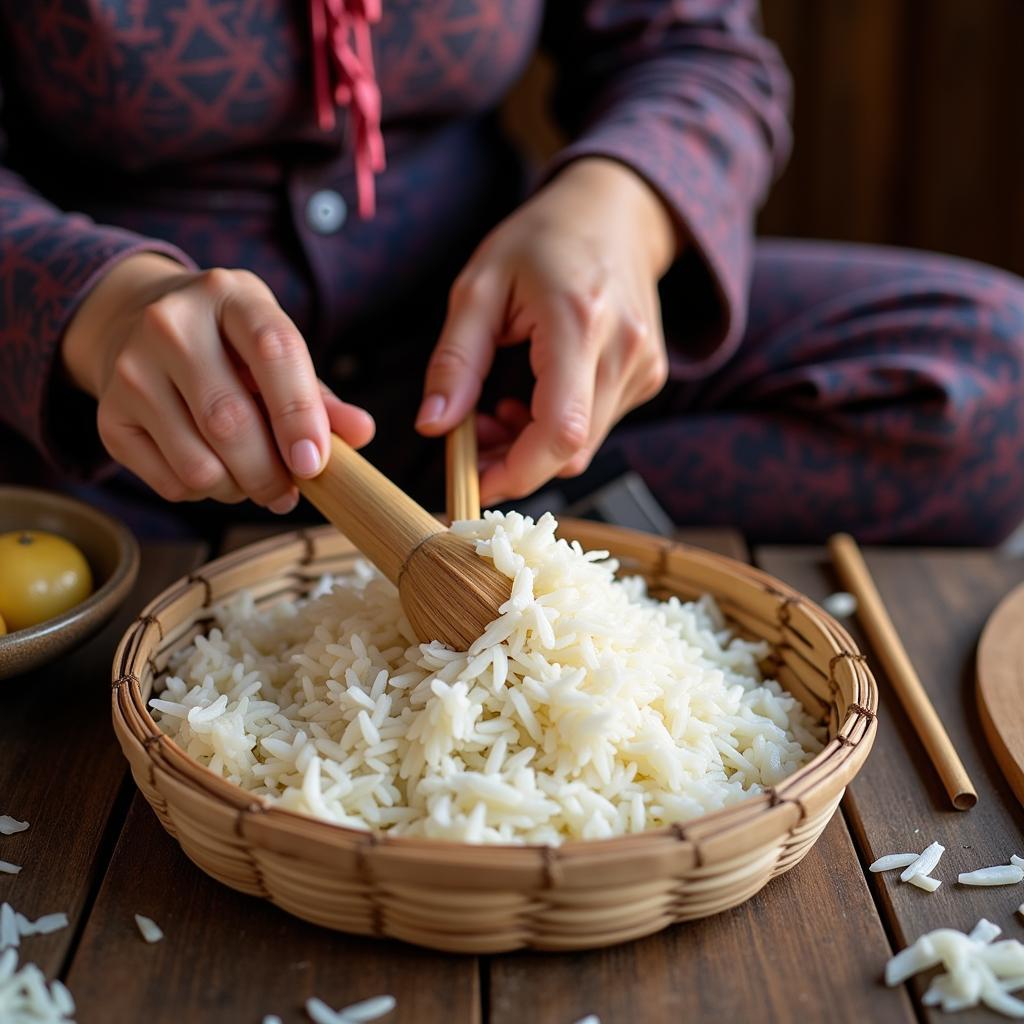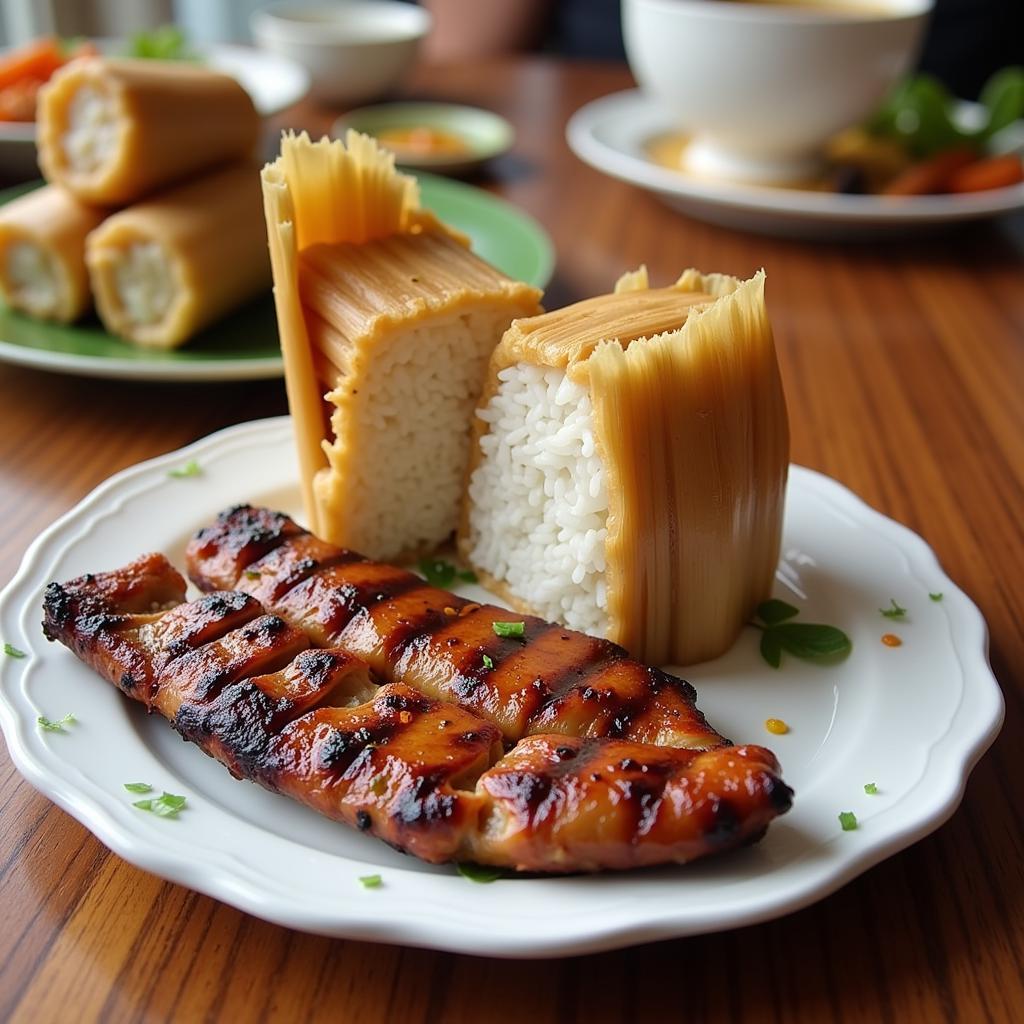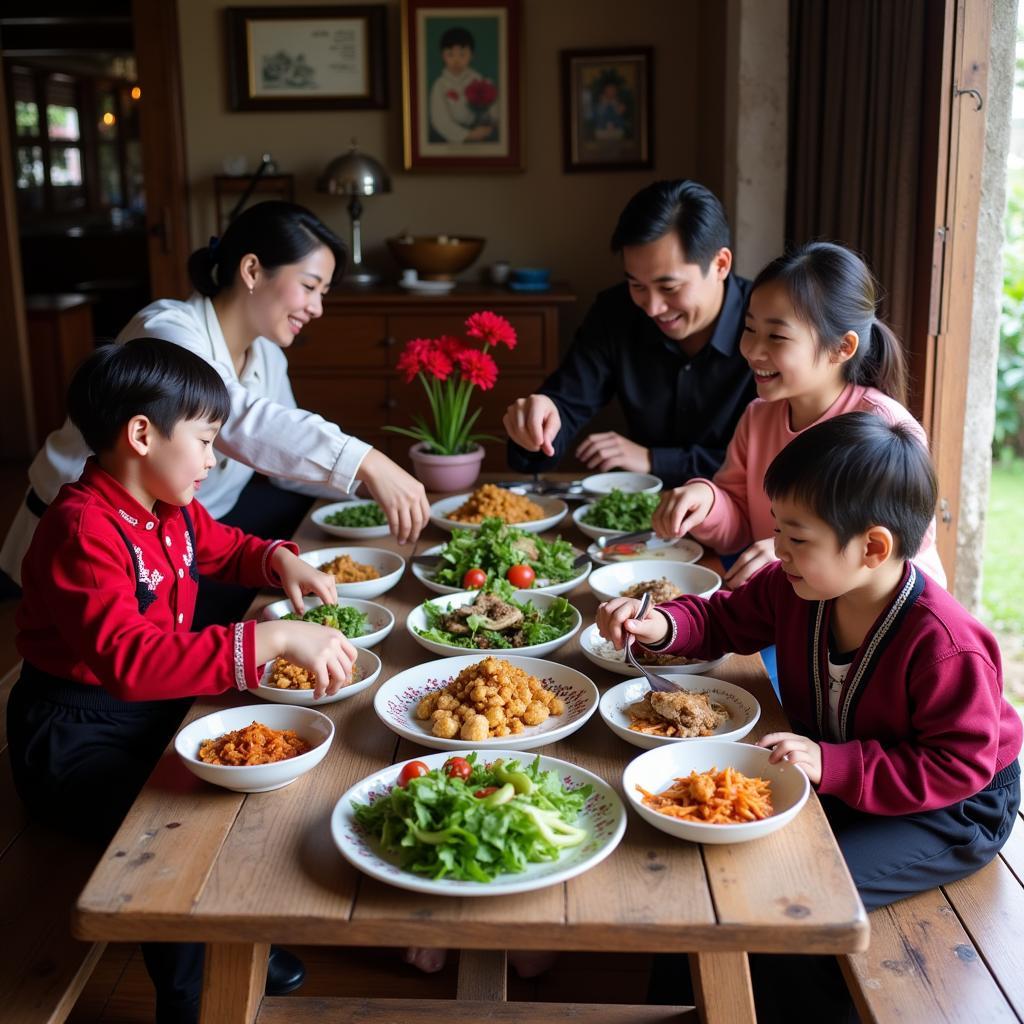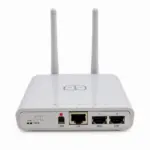Muong ethnic cuisine, a hidden gem of Vietnamese gastronomy, offers a unique culinary experience that reflects the rich cultural heritage of the Muong people. From simple yet flavorful everyday dishes to elaborate feasts for special occasions, Muong cuisine is a testament to their deep connection with nature and their resourceful use of local ingredients. Let’s explore the distinct flavors and culinary traditions of this fascinating ethnic group.
Unveiling the Secrets of Muong Ethnic Food
Muong cuisine is characterized by its emphasis on fresh, locally sourced ingredients, often foraged from the surrounding forests and mountains. Their diet traditionally relies heavily on rice, vegetables, and wild herbs, supplemented with river fish, poultry, and occasionally, game meat. The preparation methods are often simple, focusing on preserving the natural flavors of the ingredients. Steaming, grilling, and boiling are common cooking techniques, while complex spices and seasonings are used sparingly. This allows the true essence of the Muong culinary philosophy to shine through: fresh, wholesome, and connected to the land.
 Preparing Muong Sticky Rice
Preparing Muong Sticky Rice
One of the staples of Muong cuisine is sticky rice, which is enjoyed in various forms, from steamed sticky rice cakes to fermented rice wine. The preparation of sticky rice is considered a sacred ritual, often accompanied by traditional songs and ceremonies.
Must-Try Dishes in Muong Ethnic Cuisine
Several dishes are emblematic of Muong culinary traditions and offer a glimpse into their unique food culture. “Com lam,” sticky rice cooked in bamboo tubes, is a popular dish often served with grilled meats or dipped in a variety of sauces. Another must-try is “thit chua,” fermented pork, a delicacy that boasts a distinctive sour and savory flavor. “Mang da,” bamboo shoots cooked with various ingredients, is another highlight, showcasing the Muong people’s ingenuity in utilizing readily available resources.
 Muong Com Lam and Grilled Meat
Muong Com Lam and Grilled Meat
For those with adventurous palates, “sau sau,” a type of insect larvae found in the forests, is considered a delicacy. These are often grilled or fried and offer a unique crunchy and protein-rich snack.
Muong Cuisine: A Reflection of Culture and Tradition
Muong cuisine is more than just food; it is a reflection of their culture, history, and deep connection to the land. Traditional Muong meals are often communal affairs, bringing families and communities together. Food plays a central role in celebrations and festivals, with elaborate feasts prepared to mark important occasions.
“Muong cuisine truly embodies the spirit of their community,” says renowned food anthropologist, Dr. Nguyen Thi Lan. “It’s a testament to their resourcefulness, their respect for nature, and their unwavering commitment to preserving their cultural heritage.”
 Muong Family Meal
Muong Family Meal
Conclusion: Experiencing the Authentic Flavors of Muong Ethnic Cuisine
Muong ethnic cuisine offers a fascinating culinary journey, showcasing unique flavors and traditions that are deeply rooted in the culture and history of the Muong people. From simple everyday dishes to elaborate feasts, their food is a testament to their connection with nature and their resourceful use of local ingredients. So, next time you’re in Hanoi, venture beyond the usual tourist hotspots and discover the hidden culinary gem that is Muong ethnic food.
FAQ:
What are some common ingredients used in Muong cuisine?
Rice, vegetables, wild herbs, river fish, poultry, and occasionally game meat.What is “Com lam”?
Sticky rice cooked in bamboo tubes.What is “thit chua”?
Fermented pork.What is a unique delicacy in Muong cuisine for adventurous eaters?
“Sau sau,” insect larvae.What is the significance of food in Muong culture?
Food plays a central role in celebrations, festivals, and fostering community bonds.How does TRAVELCAR facilitate exploration of Muong cuisine?
TRAVELCAR offers car rental services to access remote Muong villages and experience their authentic cuisine.What vehicle options does TRAVELCAR provide for exploring Muong villages?
16-seater, 29-seater, and 45-seater vehicles are available for group travel.
Need assistance planning your Muong culinary adventure? Contact us at Phone Number: 0372960696, Email: TRAVELCAR[email protected], or visit our office at 260 Cau Giay, Hanoi. Our 24/7 customer service team is ready to help.
For more information about Hanoi’s hidden gems and our travel services, explore other articles on our website.

